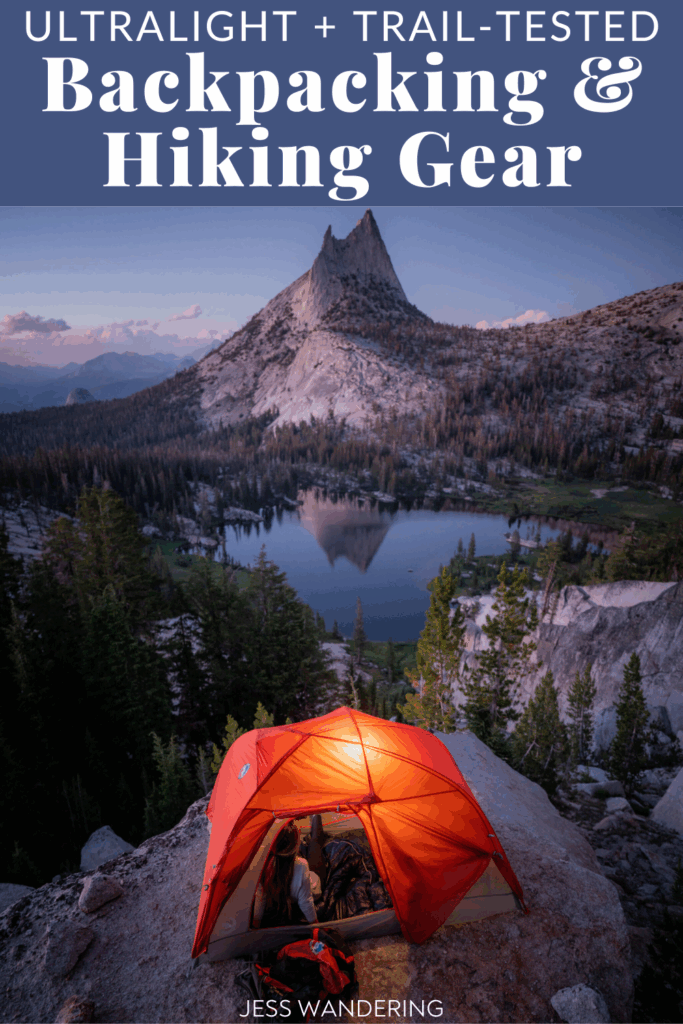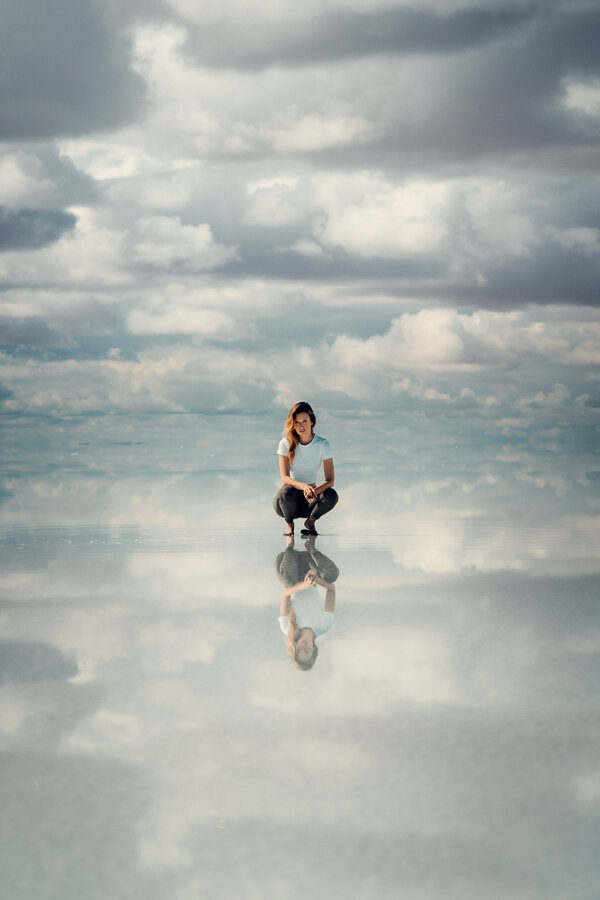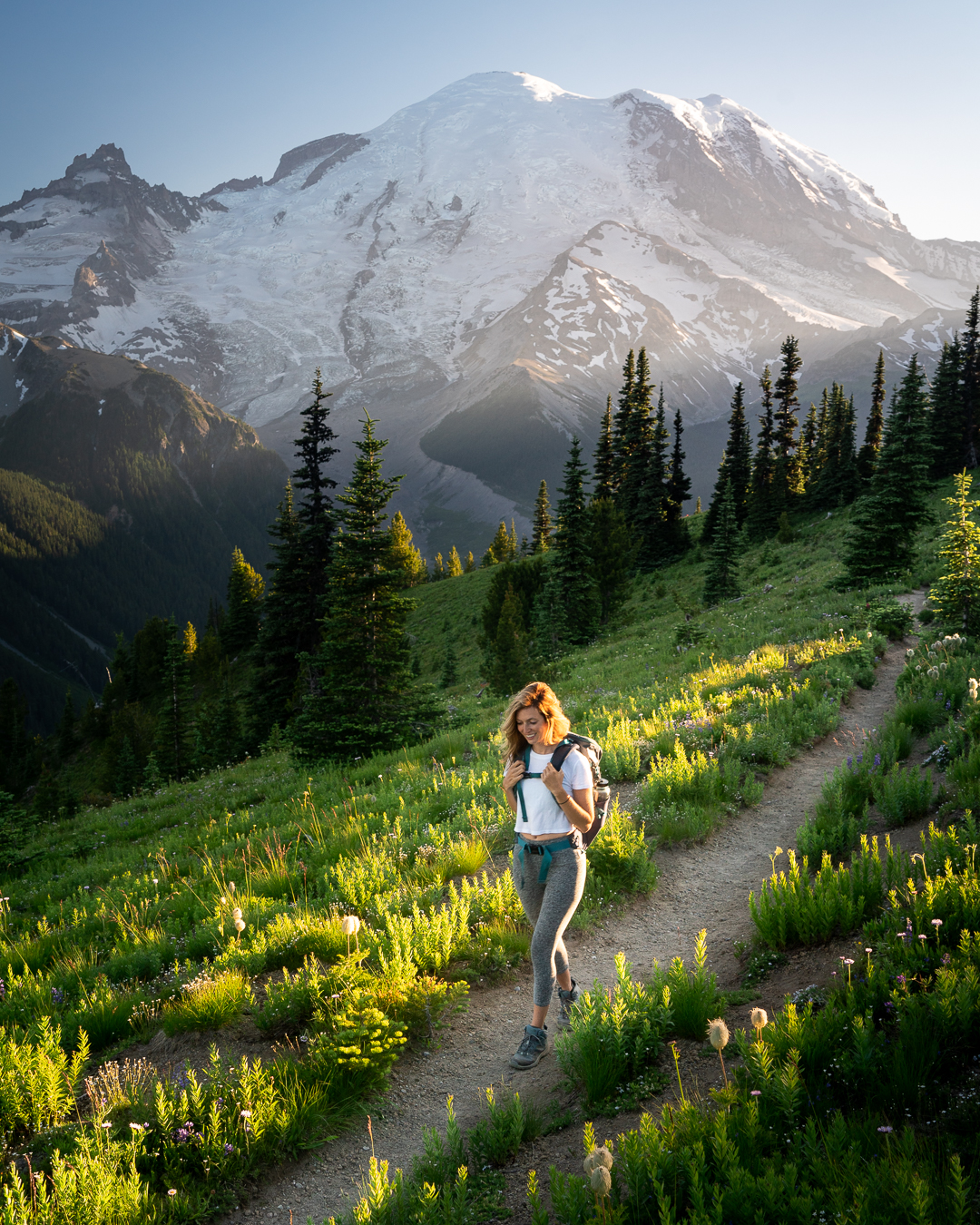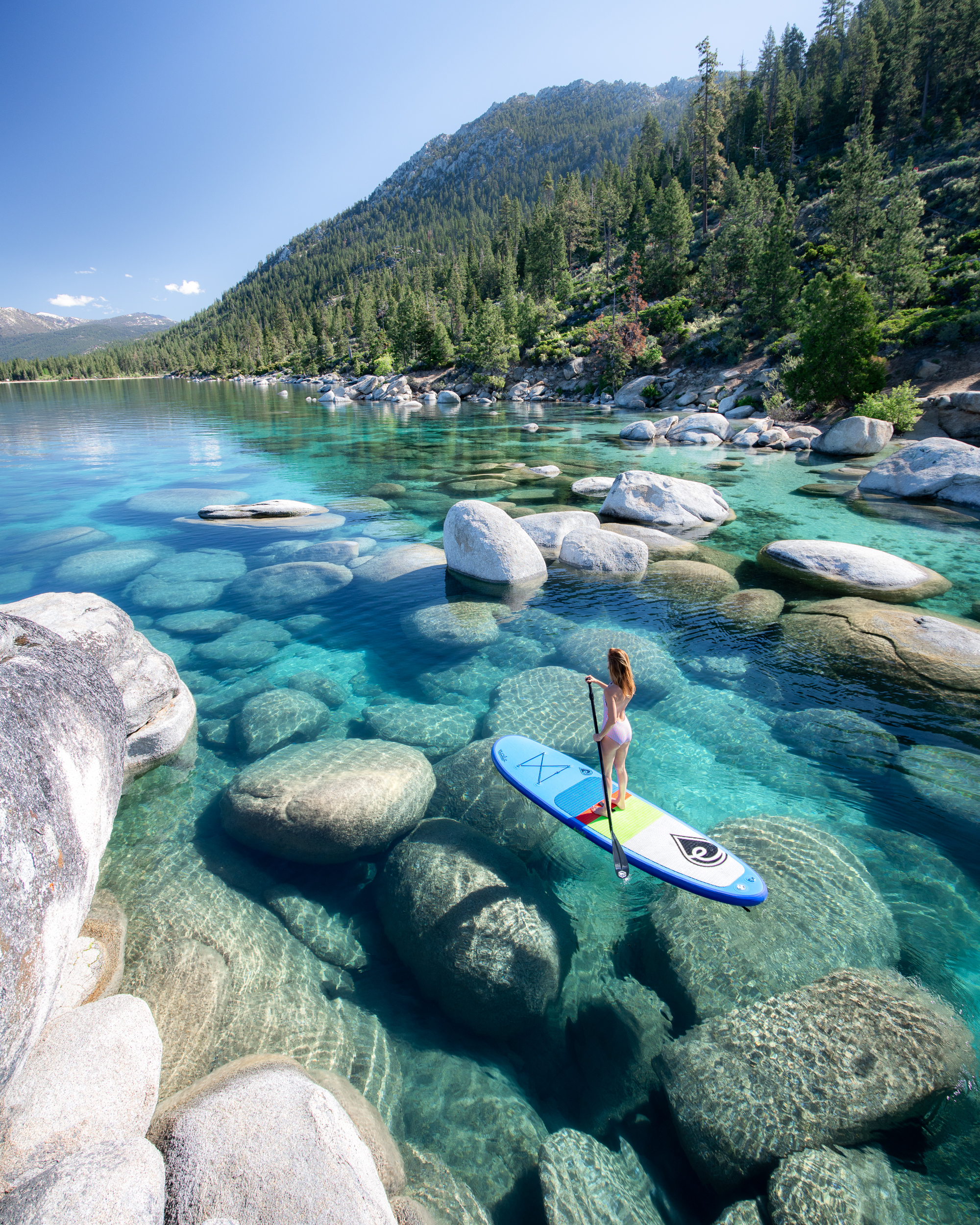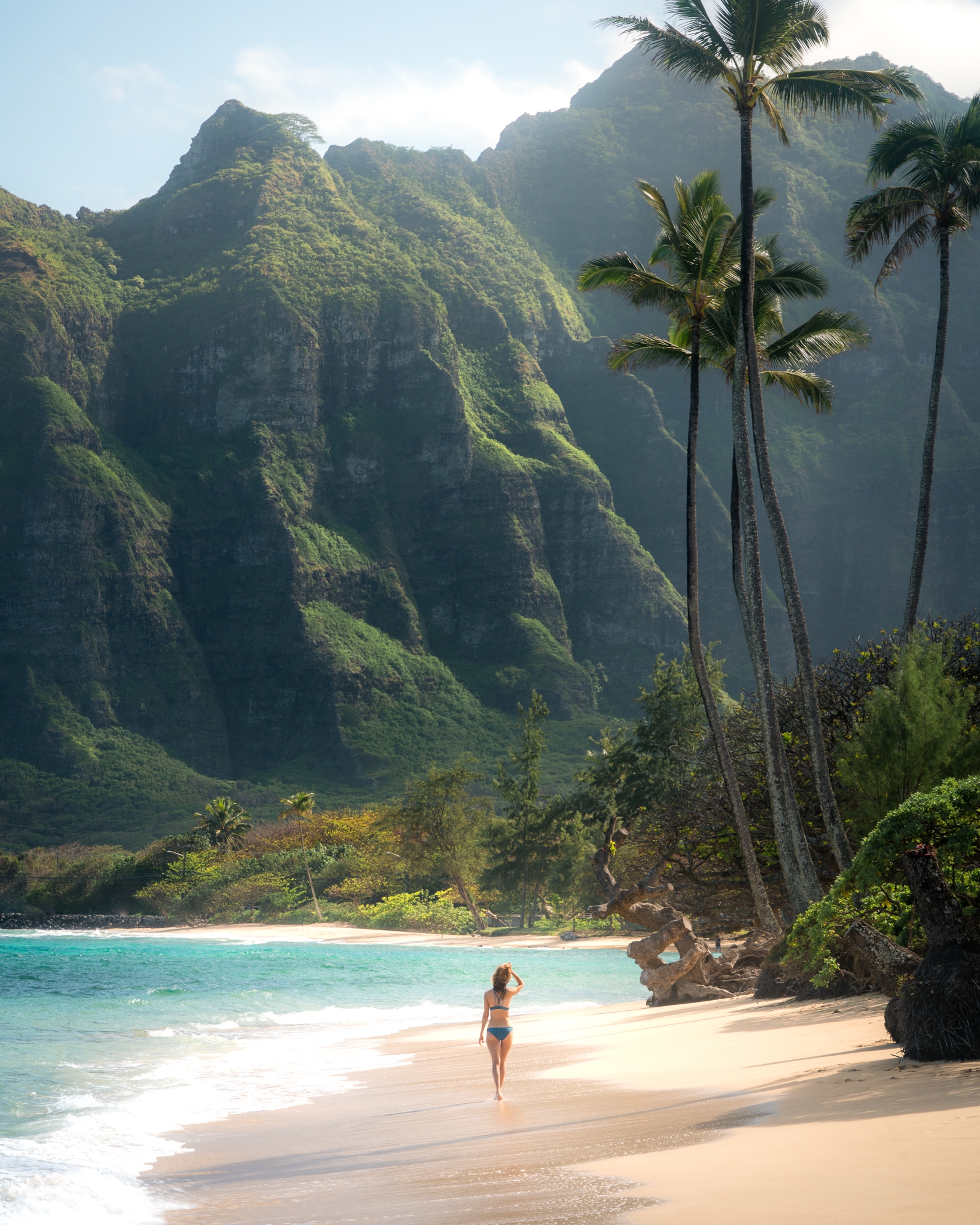After years of backpacking, I’ve found the gear that truly earns its spot in my pack — pieces I’ve tested over countless miles and in all kinds of conditions, and that I trust every time I hit the trail. Lately, I’ve been refining my kit to go lighter without sacrificing comfort or safety, and this list reflects that balance. This isn’t about the newest or flashiest gear; it’s about what actually works. Whether you’re just getting started or fine-tuning your own setup, these are my tried-and-true favorites, along with tips I’ve learned from using them in the wild.
Want to reference this list later? Save it on Pinterest for when you are ready to add my favorite gear to your cart!
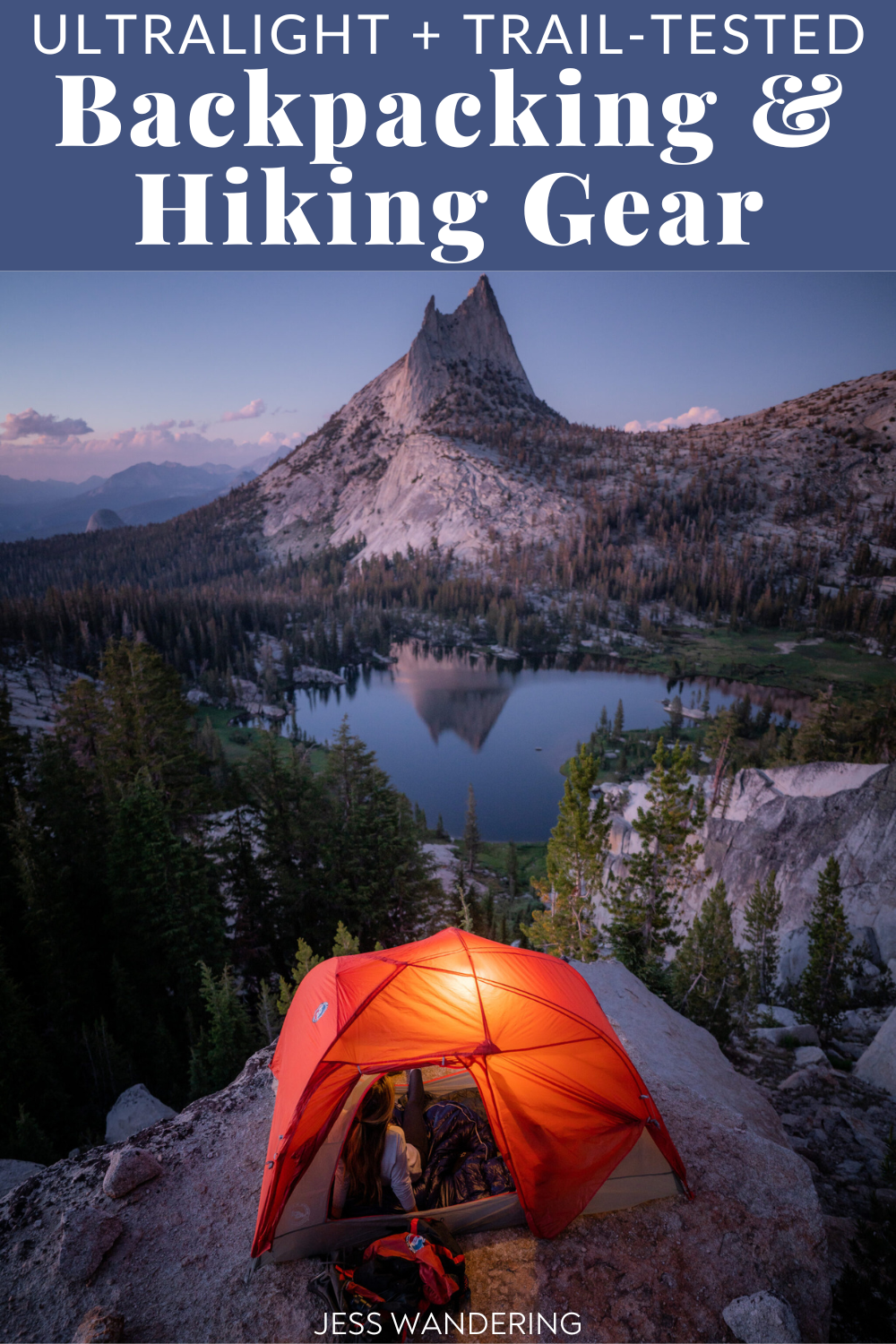
***Some of the links in this post are affiliate links. If you purchase through them, I earn a commission that helps me provide you with more content like this.
Why Ultralight Gear Matters
Over the years, I’ve realized trimming down pack weight isn’t just about saving energy. Carrying less weight makes backpacking safer, more comfortable, and more fun. A lighter pack means less strain on your knees, hips, and back, so you can hike longer and recover faster.
Even shaving off a few ounces here and there adds up — swapping out heavier gear, carrying fewer “just in case” extras, and choosing multi-purpose items can take pounds off your total load. It’s not about cutting comfort, but being intentional with what you bring so every item earns its spot in your bag.
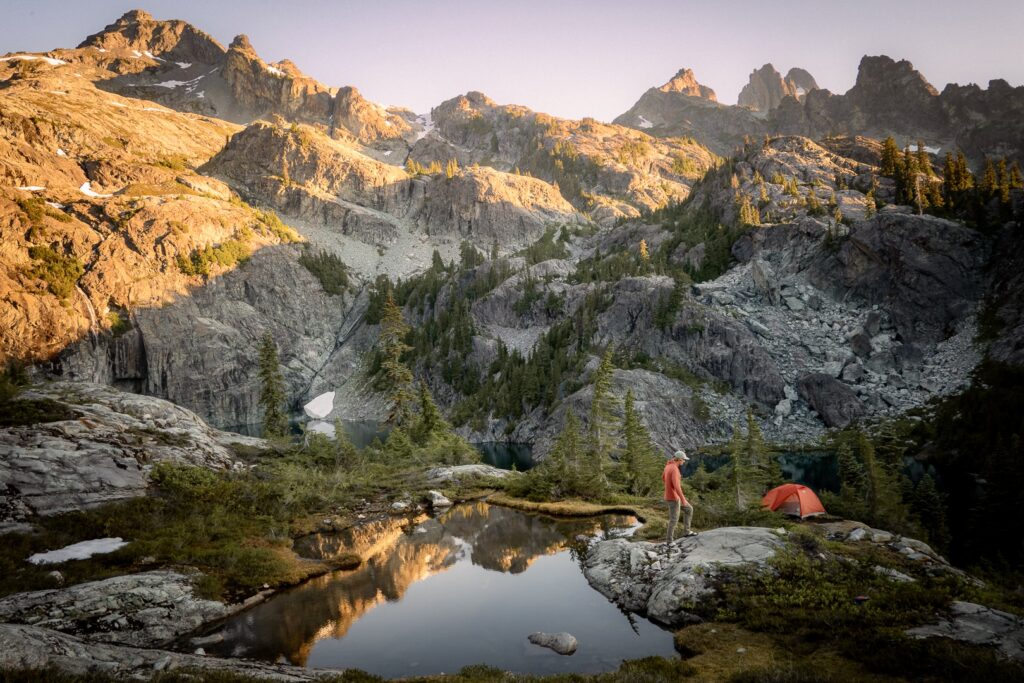
How Small Changes Add Up
Even little tweaks make a big difference. Swapping out a few heavier items for lighter ones, trimming duplicate gear, and rethinking your “just in case” extras can easily save pounds. It’s amazing how different a pack feels when it’s even 5 pounds lighter — suddenly, backpacking feels more like walking instead of hauling.
Top Tips for Cutting Pack Weight
Weigh Everything – Knowing what your gear weighs is the first step to lightening it.
Focus on the Big Three – Your tent, pack, and sleep system are the easiest places to save significant weight.
Ditch Duplicates – You probably don’t need three different long-sleeve layers or two cook pots.
Choose Multi-Use Gear – Things like a sit pad that doubles as your pack’s back panel save both space and weight.
Use A Packing List – A packing checklist will help you stay focused and prevent you from packing more than you actually need.
Use A Smaller Backpack – Parkinson’s Law says that work (or in this case, stuff) expands to fill the space available. In backpacking, this often shows up as “pack to your pack.” If you carry a bigger backpack, you’ll almost always end up filling it, even with things you don’t really need.
That’s why switching to a smaller, ultralight pack can be a game-changer: it forces you to prioritize essentials and cut down on unnecessary items.
Refine Over Time – You don’t have to go ultralight overnight. As you backpack more, you’ll naturally figure out what’s worth carrying and what’s not.
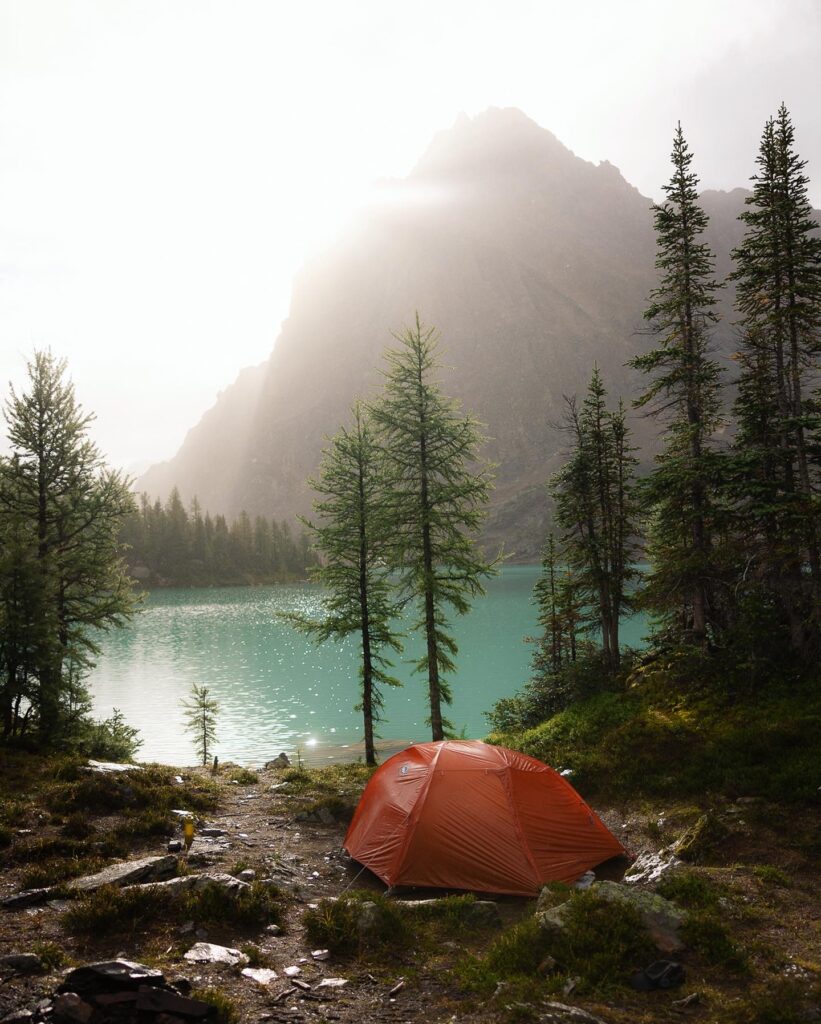
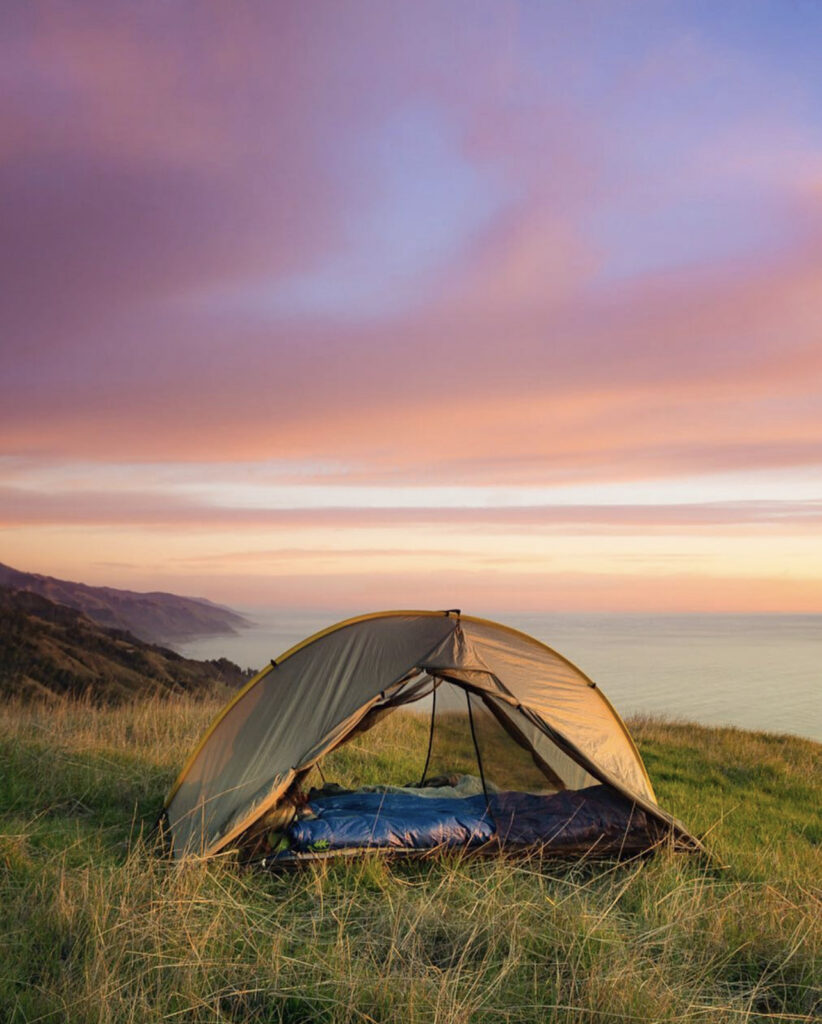
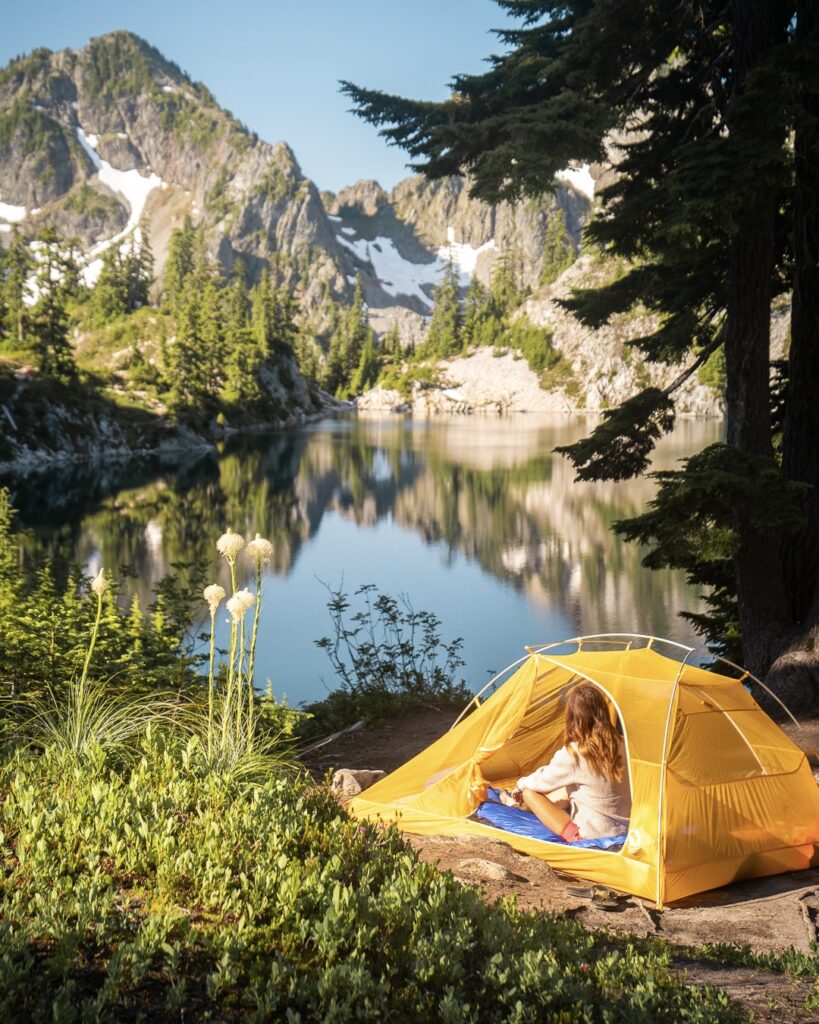
Shelter and Sleep Gear
SLEEPING BAG – The Feathered Friends Egret UL 20 has been my go-to sleeping bag for the last two seasons because it’s lightweight, insanely warm for its weight, and compresses small enough to save space in my pack. Plus, I love that Feathered Friends is a local Seattle company internationally respected for its down gear.
SLEEPING PAD – As a side sleeper, I’m picky about sleeping pads, and the NEMO Tensor Trail Ultralight Insulated Sleeping Pad is one of the only ultralight pads I’ve found that’s genuinely comfortable (for a sleeping pad). It’s warm, lightweight, and packs down small, but still has enough cushion to sleep well after a long day on the trail. After years of use, it’s proven reliable and worth every ounce.
BACKPACKING PILLOW – The Sea to Summit Aeros Premium Pillow is the best ultralight pillow I’ve found. Does is feel like your pillow on your bed at home? NO. But, it’s still one of those little luxuries I never regret packing. It’s ultralight, packs down to nothing (we’re talking the size of a small fist), and inflates in seconds — but still feels soft and supportive enough to actually sleep decent in the backcountry.
TENT (THREE PERSON) – The Big Agnes Tiger Wall UL3 is my pick when I want a little extra room without a huge weight penalty. In the ultralight tent world, a ‘3-person’ tent is really just a spacious 2-person tent, so if you like spreading out your gear or sleeping more comfortably, this is the way to go. It’s semi-freestanding, meaning it needs a few stakes to hold its shape, but it’s still quick to set up and incredibly light for its size.
TENT (TWO PERSON) – The Big Agnes Copper Spur UL2 has been my go-to backpacking tent for years because it’s roomy, ultralight, and incredibly reliable. It’s also the only truly freestanding tent on this list, which means it can stand on its own without stakes — a huge advantage when camping on rocky terrain or spots where staking isn’t easy. Despite its light weight, it’s held up to years of wind, rain, and rough campsites, making it my overall top tent pick.
ULTRALIGHT TENT – The Tarptent Double Rainbow is a great option if you want an ultralight tent that’s simple, roomy, and more affordable than many other cottage-brand shelters. It’s a single-walled tent, which keeps the weight down and makes setup quick, but it does mean condensation can occasionally be an issue.
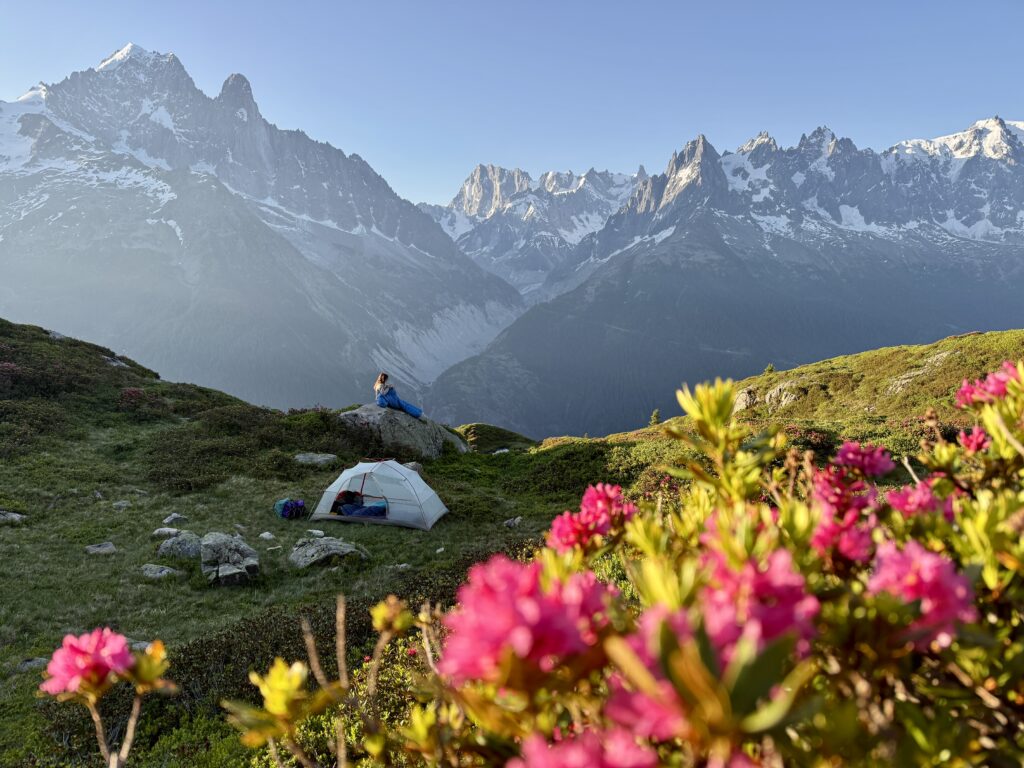
Food, Water, & Kitchen Gear
ULTRALIGHT STOVE – I recently swapped my Jetboil Flash for the Soto WindMaster with 4Flex pot supports because it’s lighter and more versatile—you can use different pots, not just the Jetboil mug. It also lights instantly and boils fast even in windy conditions. Plus, it fit’s nicely inside my ultralight cook pot, along with everything else I need to make a meal.
COOK POT – The TOAKS Titanium 750 ml Pot, perfectly fits a 110g Fuel Canister (the smaller standard size that you see), WindMaster Stove, and a mini BIC Lighter. It’s small and ultralight, but still large enough to heat up enough water for all my backpacking meals or even cook up some Annies Mac & Cheese. The TOAKS Pot can also easily double as a mug for those morning coffees or tea.
FUEL – I don’t have a preferred fuel brand. I generally like the smaller 110g canisters because they nicely fit inside most cook pots or even the Jetboil if you decide to go in that direction.
ALL-IN-ONE STOVE – The Jetboil Flash is slightly heavier than the WindMaster setup, but it’s still ultra-compact and packs up in its own cozy mug. I used this setup for almost a decade without any real complaints. I think it’s ideal for hikers who want fast, one-pot simplicity.
LIGHTER – Most of the stoves you’ll find have built in starters, but I never feel comfortable relying on them. Plus there are other reasons you might need/want to start a fire, so I like to keep a mini Bic lighter in my cook kit.
EATING UTENSIL – The Snow Peak Titanium Spork (Long) is the utensil in my backpack right now. But honestly, the brand doesn’t really matter. There are three things that do matter though: First, your backcountry eating utensil should have a long handle because those backpacking meal bags are deep. Second, I always look for a spork because you only want one utensil. Less is better! And lastly, make sure it’s made out of a lightweight and durable matterial like titanium.
FOOD STORAGE (BEAR SAFE) – The BearVault BV450 Jaunt Bear Canister is the most reliable way to store food in bear country. It’s required in many national parks and wilderness areas because it’s completely bear-proof. Although still annoyingly heavy, it’s lighter than other approved bear canister options, and it will keep you and the bears safe! This size is generally considered good for 4 nights, or 2 night trips with 2 people.
The Ursack is a lightweight alternative to a bear canister. It’s made from bulletproof fabric that resists chewing and clawing, and it’s much easier to pack in your bag. You’ll still need to tie it to a sturdy tree, and it doesn’t protect your food from getting crushed, but for trips where bear canisters aren’t required, it’s a great option for saving weight and space. It is much mucho expensive though.
FOOD STORAGE (NO BEARS) – I store my food in the Mesa Food Bag by Backcountry Exposure when bears and rodents aren’t an issue (think Europe lol). It’s ultralight, the top zipper makes it easy to sort through, and it keeps everything organized in my backpack.
WATER PURIFIER – The Katadyn BeFree is my favorite filter for speed and simplicity. It’s ultralight, easy to squeeze, and perfect for quickly filling bottles on the go. The wide mouth makes it easy to collect water from shallow streams, and it packs small enough to always bring along.
The Grayl Water Filter is much heavier but unbeatable for international travel or areas with questionable water sources because it removes viruses as well as bacteria and protozoa. It works like a French press—fill, press, and drink—with no need for extra bottles or gear.
NALGENE – It may seem old school, but a Nalgene is one of the most versatile pieces of gear I carry. It’s indestructible, easy to clean, and works for everything from water storage to mixing drinks or rehydrating meals. On cold nights, I’ll even fill it with boiling water, seal it tight, and tuck it into my sleeping bag for extra warmth.
PEAK REFUEL BACKPACKING MEALS – Peak Refuel meals are my go-to for backpacking because they’re high in protein, and actually feel like real food at the end of a long day. My favorites are Butternut Dal Bhat (great for my vegi friends), Chicken Coconut Curry, Homestyle Chicken and Rice (with hot sauce), and last but not least Sweet Pork & Rice (if I’m not traveling ultralight, I like to wrap this one up in a tortilla and add avocado).
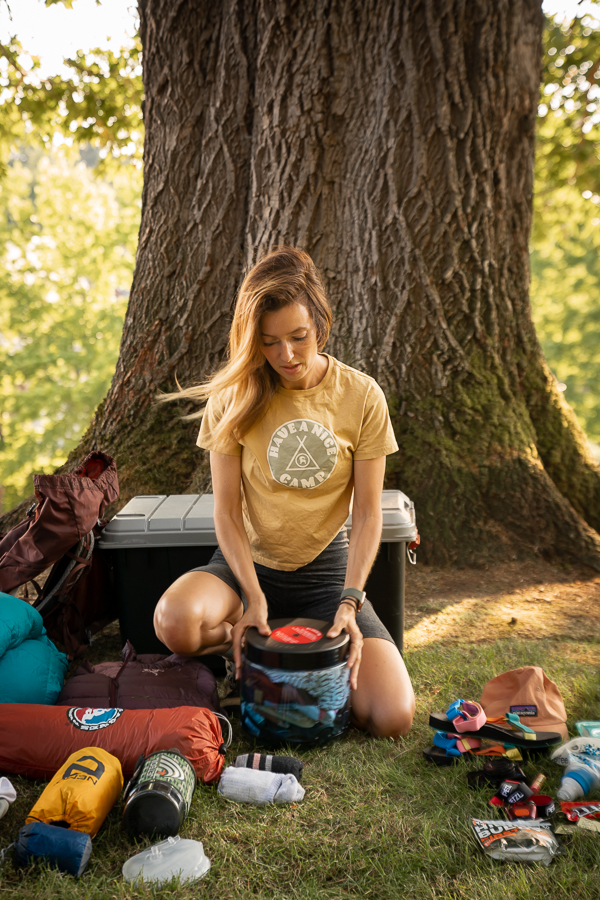
Packing & Organization
ULTRALIGHT BACKPACK – Gossamer Gear’s Gorilla 50L pack is my newest backpack and the one that I’ve used on all my most recent backcountry trips. I’ve tried a lot of ultralight packs over the past few years (Hyperlite, ULA Equipment, etc.), but most of them didn’t work for me. They were either too big, didn’t have enough support, or skimped on important features like load lifters. The Gorilla 50 is the first one that truly does it all: ultralight, comfortable, and supportive enough for multi-day trips. At 50L, it’s just the right size to carry everything I need without tempting me to overpack. I also love the removable back pad, which doubles as a sit pad for breaks on the trail.
This is a great pack if you’re ready to go lighter but still want structure, comfort, and thoughtful design. If you are looking for a pack with a little more volume the Mariposa 60 is also a fan favorite.
MORE TRADITIONAL BACKPACK – The Osprey Eja (women’s) and Exos (men’s) are great packs for hikers who want to lighten their load but aren’t ready to give up comfort and support. They’re heavier than cottage ultralight packs, but that extra weight gives you a sturdy frame, excellent ventilation, and a suspension system that keeps heavy loads feeling comfortable over long days. And it’s still much lighter than a more traditional pack with all the bells and whistles.
BACKPACK LINER – A Nylofume Pack Liner is the simplest, lightest way I’ve found to keep my gear dry. It’s tougher than a trash compactor bag, completely waterproof, and weighs almost nothing. I like the liner better than a traditional rain cover because with the cover posture can still get into your pack through the uncovered back.
BAG FOR CLOTHING – Hyperlight Stuff Sack for clothing. I like an little extra layer of organization and protection for my clean clothes. I’ll pull this out of my bag every night and keep it in the tent so it’s ready to go the next morning and I can easily access whatever clothing the conditions call for.
ULTRALIGHT DAYPACK – The Sea to Summit Ultra-Sil Day Pack is one of my favorite ‘just in case’ items. It weighs almost nothing, packs down to the size of an egg, and gives me 20 liters of extra carrying space when I need it. I use it most frequently for side hikes when I want to travel fast and light. It’s great to throw in your suitcase to for travel!
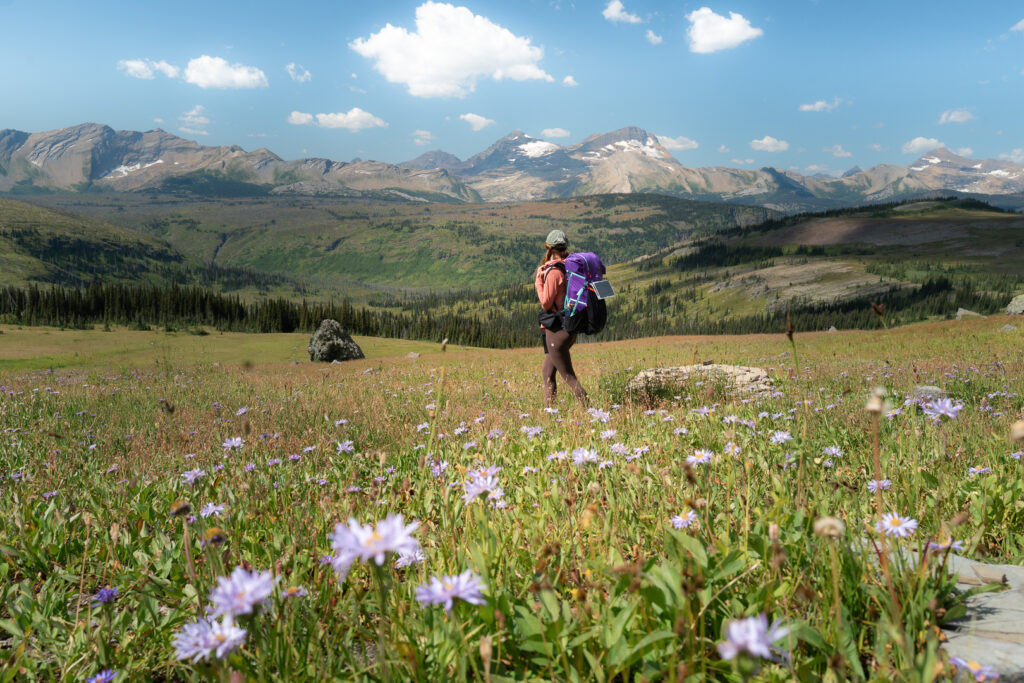
Other Backpacking Gear
Headlamp – Nitecore NU25 400 Lumen Rechargeable Headlamp
GPS COMMUNICATION – I carry the Garmin InReach Messenger Plus for peace of mind on backcountry trips — it lets me send texts and share my location even when there’s no service. The battery lasts for days, and it’s a small, reliable way to stay connected and safe when I’m off the grid. AND you can send photos and voice notes! Watch the video I made about the Garmin Messenger Plus! It’s one of my favorites.
TREKKING POLES – Durston Iceline Trekking Poles. I just picked up the Durston Iceline trekking poles because I wanted something ultralight but sturdy to take pressure off my knees on big hikes. They’re incredibly light (under 10 oz per pair) and designed for strength, so I’m excited to see how they perform on the trail.
MULTI-TOOL – Swiss Army Classic Knife
FIRST AID – Band-Aids, Leukotape, Advil, anti-bacterial cream.
REPAIR KIT – Repair Spool by Igneous, Tenacious Tape.
POWER BANK – Nitecore Power Bank
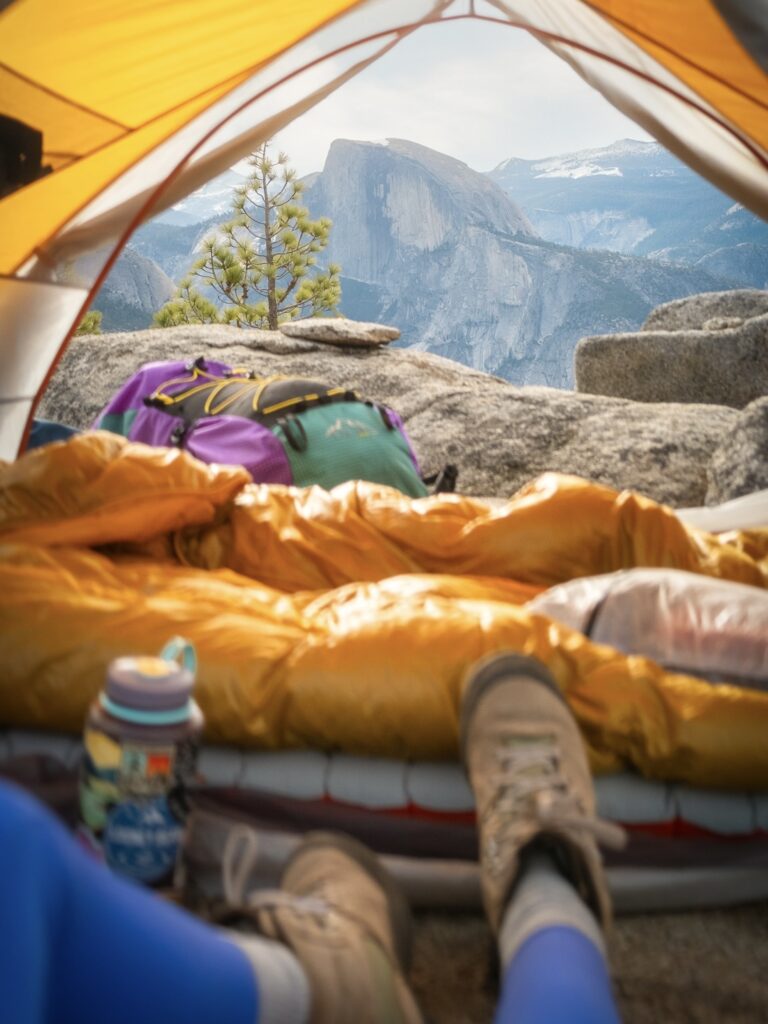
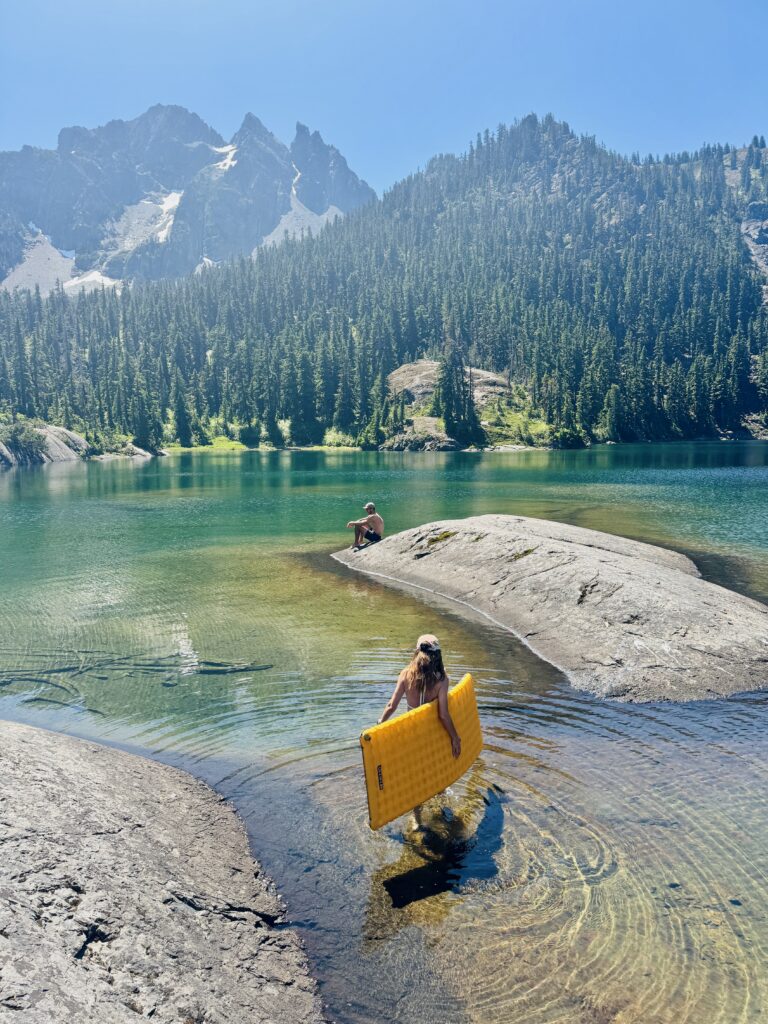
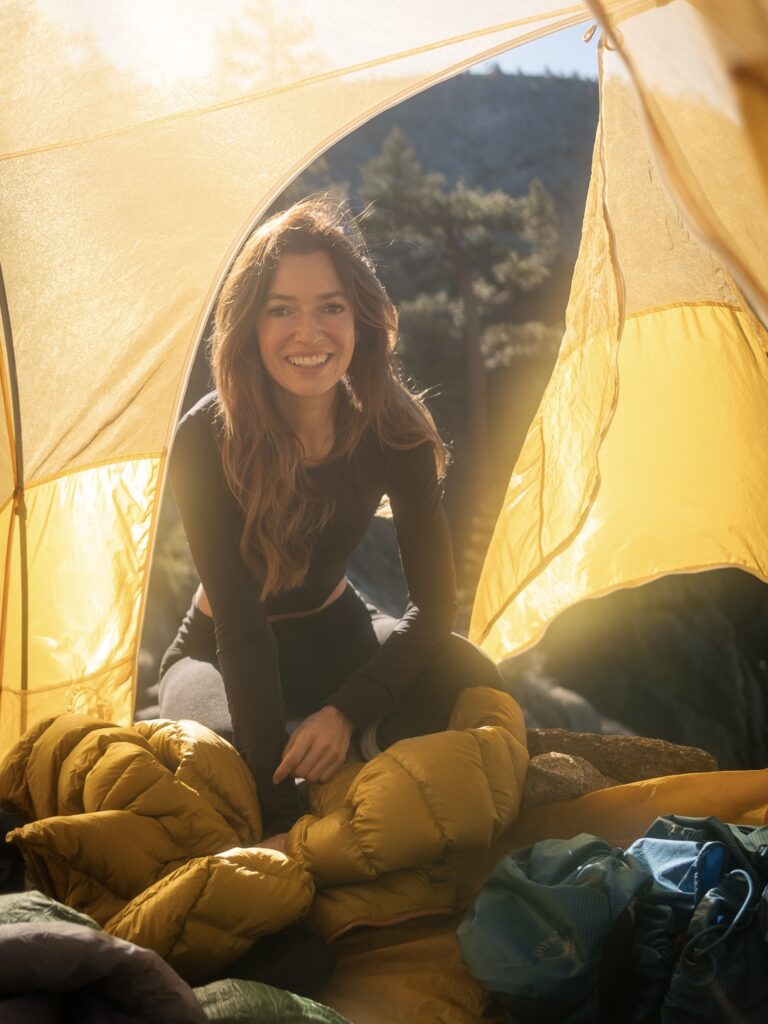
Clothing Essentials
SUN SHIRT – The Crater Lake Hoody is my favorite sun shirt because it’s so light and soft it almost feels like air. It offers full UPF 50+ protection for long days in exposed terrain, so I don’t have to carry buckets of sunscreen.
SHORTS – You don’t need to reinvent the wheel here. Whatever works for you! This summer I’ve been really enjoying the Lululemon Pace Rival High Rise Shorts and Outdoor Voices Warmup 5” Shorts.
HIKING PANTS – To be honest I’ve never been a big hiking pants person. I generally just wear one of my favorite pairs of leggings, because that’s what I’m most comfortable in. But this summer I picked up a pair of REI Trailmade Pants and they were nice! The Trailmade Pants are affordable, durable, and surprisingly versatile for hiking and backpacking. And I have to admit it was nice to have a pair of pants that were a bit more airy than leggings.
INSULATED LAYER (Down Jacket ) – The Patagonia Fitz Roy Down Jacket is a cold-weather essential I bring on alpine or winter trips when serious warmth is non-negotiable. It’s stuffed with premium 800-fill down, so it’s incredibly warm for its weight. I’d recommend sizing down. But when I’m really trying to go lighter without sacrificing warmth it’s hard to beat Rab’s Mythic G Down Jacket. Best to pick this one up on sale if you can!
INSULATED LAYER (Ultralight Fleece Jacket) – I recently purchased the Mountain Hardwear AirMesh Hoody as an alternative to Alpha™ Direct top. It’s incredibly breathable, wicks moisture fast, and adds a cozy layer of warmth. The super thin grid fleece design makes it feel airy yet cozy, and it layers easily under a jacket without bulk — great for high-output adventures where I’m constantly on the move.
RAIN JACKET – The Rab Phantom Jacket is an ultralight, fully waterproof shell that packs down small and disappears in your bag until you need it. I’m a fair weather hiker, but in the mountains weather can change fast, so it’s great to have rain protection that doesn’t weigh me down.
SOCKS – I’ve been wearing Darn Tough Micro Crew Hiker socks for years because they’re tough enough for endless miles of backpacking, don’t slip or bunch, and can stay relatively fresh for days at a time. Plus, they’re guaranteed for life, which says it all. I’m also a big fan of the Stride Micro Crew Ultra-Lightweight Running Socks for hot weather hikes.
HAT – Whatever works for you! I usually take a baseball cap so that I can wear my sun hoody over it, but bucket hats are great for protection too.
SWIMSUIT – This Londre Bodywear swimsuit is extra special to me because it’s part of my own collaboration with the brand. It’s sustainably made from recycled materials and designed with adventure in mind. It’s flattering on so many body types and perfect for everything from swimming in alpine lakes to lounging on the beach. Plus, it’s reversible, so you get two for one!
Shoes
TRAIL RUNNERS – The Hoka Challenger Trail Running Shoes is my go-to shoe for warm weather hiking. I prefer trail runners over hiking boots because they’re lighter, more breathable, and dry quickly. I’ve worn mine on everything from day hikes to multi-day trips, and they’ve been incredibly durable for how lightweight they are.
BOOTS – The Danner Inquire Chukka Mid is my all time favorite hiking boot! I wear it when I want more ankle support than a trail runner but still need something light and flexible. Or when I just want to look cute lol. They’re waterproof and comfortable right out of the box, making it perfect for shoulder-season hikes, rougher terrain, or when I’m carrying a heavier pack. A great balance between a traditional hiking boot and a lightweight shoe.
Camera
SONY RX100 VII – The Sony RX100 VII is my favorite compact camera for backpacking because it’s small enough to slip in a pocket but still delivers professional-quality photos. The 24–200mm zoom range makes it incredibly versatile, and it’s the perfect option when I don’t want to carry one of my heavier cameras but still care about image quality.
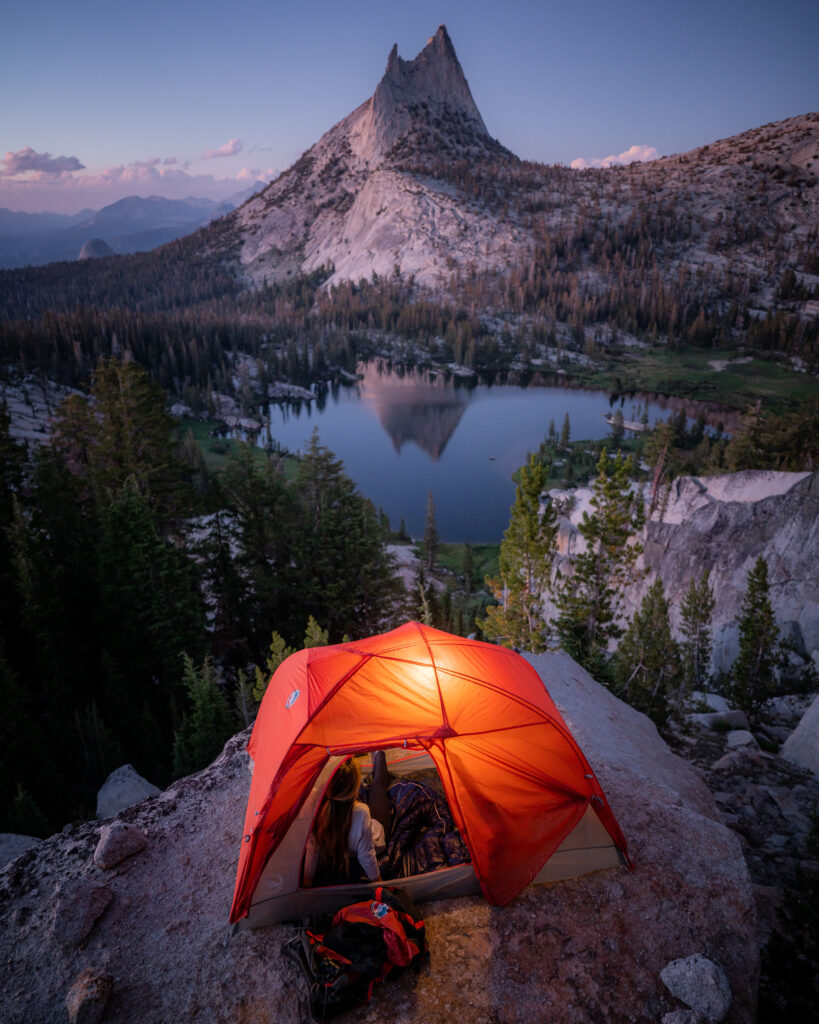
Hygiene
SOAP – A small, biodegradable soap like Dr. Bronner’s organic soap for dishes, hands, or laundry.
Leave No Trace: Even biodegradable soap can harm ecosystems if used directly in lakes or streams. Always carry water at least 200 feet from natural water sources to wash yourself, your clothes, or your dishes. Use only a small amount of biodegradable soap — a little goes a long way. When you’re done, dispose of wastewater in a 6–8 inch cat hole
TROWEL – Lightweight and durable, perfect for digging a proper cathole and practicing Leave No Trace.
WIPES – Quick, easy way to freshen up on trail days when showers aren’t an option.
KULA CLOTH – The Kula Cloth is a reusable antimicrobial pee cloth that’s more hygienic and eco-friendly than packing out toilet paper. I must admit that this idea did not sit well with me at first, but I’ve had too many people highly recommend it, so I’m keeping an open mind and giving it a try on my next backpacking trip.
Keeping it clean: After peeing, pat dry with the soft side, fold the cloth, and snap it shut before clipping it to your pack. Rinse with water or a few drops of biodegradable soap when needed, and give it a full wash once you’re back home.
TOOTHBRUSH: A cut-down or travel-size toothbrush to save weight without sacrificing hygiene.
TOOTHPASTE: A tiny travel tube or toothpaste tabs to keep things simple and lightweight.
At the end of the day, gear is personal. What works for me might not work for everyone, and that’s okay! This list reflects years of trial, error, and refinement to find the balance between comfort, safety, and weight that works for me. My hope is that it gives you a starting point, sparks ideas, or helps you feel more confident in your own gear choices. Backpacking is about finding your rhythm and what makes being out on the trail enjoyable. If this guide helps make your adventures a little easier or more comfortable, then it’s done its job.
Have a piece of gear that you love? Tell me about it! I’m always looking for new gear to try out!
Like this post? Pin it for later and share it with others!
